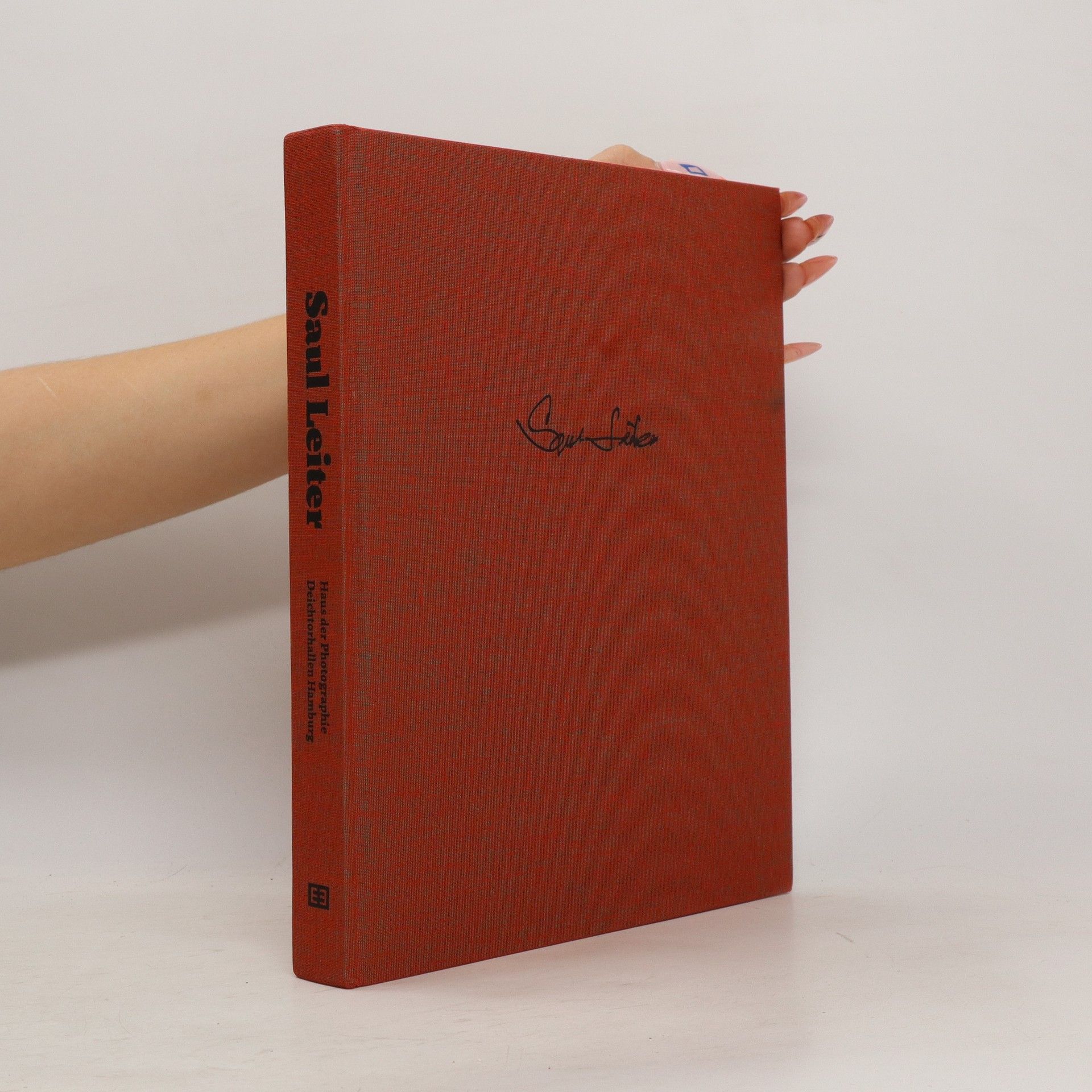Il est de ces photographes qui ne cherchent pas la notoriété, ni le succès commercial malgré une certaine aptitude à l'image appliquée. Né à Pittsburgh, il délaisse vite ses études pour rejoindre New York au tournant des années 1940-1950. Dans ce lieu de création intense où se croisent et s'expérimentent des recherches venues des horizons européens et américains, il rencontre Rothko et les expressionnistes abstraits, Faurer et Smith. Il découvre la Street photography et le travail d'Henri Cartier-Bresson. Mais ses images de rue sont d'une extrême originalité et ne témoignent d'aucune influence directe. Il impose sa maîtrise de la couleur dans des vues citadines non conventionnelles dans lesquelles les reflets, les transparences, la complexité des cadrages, les effets de miroir se marient à une technique très particulière des émulsions pour écrire une forme unique de pastorale urbaine.
Saul Leiter Livres






A beloved photobook classic from the pioneer of color photography This is a reprint of the immensely successful Early Color (2008), which presented Saul Leiter's remarkable body of color work to the public for the first time in book form. Although Edward Steichen had exhibited some of Leiter's color photography at The Museum of Modern Art in 1953, it remained virtually unknown to the world thereafter. Leiter moved to New York in 1946 to become a painter, but through his friendship with Richard Pousette-Dart he quickly recognized the creative potential of photography. Leiter continued to paint, exhibiting with Philip Guston and Willem de Kooning, but the camera remained his ever-present means of recording life in the metropolis. None of Leiter's contemporaries, with the partial exception of Helen Levitt, assembled a comparable body of subtle, often abstract compositions of lyrical, eloquent color.
Forever Saul Leiter
- 293pages
- 11 heures de lecture
This collection showcases the work of Saul Leiter, featuring a significant amount of material that has never been published before. It highlights his unique perspective and artistic vision, capturing moments of beauty and emotion through his distinctive photography. The book offers a fresh look at Leiter's contributions to the art world, making it a valuable addition for both fans and newcomers to his work.
Early black and white
- 388pages
- 14 heures de lecture
The distinctive iconography of Saul Leiter's early black-and-white photographs stems from his profound response to the dynamic street life of New York City in the late 1940s and 50s. While this technique borrowed aspects of the photo-documentary, Leiter's imagery was more shaped by his highly individual reactions to the people and places he encountered. Like a Magic Realist with a camera, Leiter absorbed the mystery of the city and poignant human experiences. Together with Early Color, also published by Steidl, the two volumes comprising Early Black and White show the impressive range of Leiter's early photography.
All About Saul Leiter
- 293pages
- 11 heures de lecture
Exploring the comprehensive oeuvre of a pivotal postwar photographer, this book delves into their significant contributions to the field. It examines the evolution of their style, thematic concerns, and the impact of their work on contemporary photography. Through detailed analysis and visual examples, readers gain insight into the artist's unique perspective and the cultural context that shaped their vision. This exploration not only highlights the photographer's achievements but also situates them within the broader narrative of postwar artistic movements.